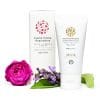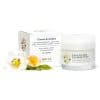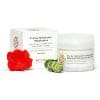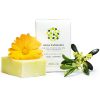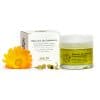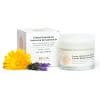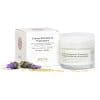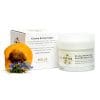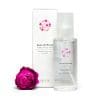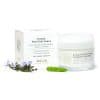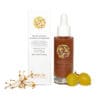the Pot Marigold floze
Marigold is an annual plant of a couple of palms high, very branched. The leaves are whole, weak, somewhat hairy and pale green. Its large flowers are born on the sides of the plant. They have orange ligules and 3 little teeth at the apex. Its seeds are curved and look like little worms.
Traditional properties of the Marigold
- Disinfectant, anti-inflammatory,healing, diuretic and depurative
- One its most important properties that it cures a lot of skin conditions such as eczemas, spots, chilblains, scabies, burns, fungus, furuncles and breast cysts, when applying the fresh juice, oil, ointment or compresses with the infusion.
- For calluses or warts, apply the mashed stem directly.
- For varicose veins, take in infusion, fresh leaf poultices or ointment.
- For sprains and bumps, use it in baths and poultices.
- Marigold encourages the healing of stomach ulcers.
- It relieves gastroenteritis and other digestive problems.
- The tincture can be rubbed on the outside for muscle pains.
- For insect bites, the flowers are crushed and the skin rubbed with them.
Marigold tincture
Traditionally used for wounds, rheumatism, bumps, sprains, skin conditions (including acne) lower with some water and apply internally. The tincture is obtained through maceration of 100 grams of flowers in ½ liter of alcohol during 7 to 9 days outdoors. Then, it is filtered with a gauze and stored in a glass jar. It can be taken in doses of 20 to 30 drops, 2 to 3 times a day.
Marigold ointment
For skin, sprains, inflammations, wounds, varicose veins, phlebitis (inflammation of the veins), burns, cracks (including in the nipples) and fungus. It can also be used as a lip balm. Marigold oil is made (in the same way as the dye but replacing alcohol with olive oil and leaving it to macerate for 30 days) with flowers and plants. It is filtered with a white cotton cloth and squeezed. Melt beeswax in a saucepan over low heat. The proportion is 35 or 40 gr. of wax for every 1/4 litre of oil. The more wax, the thicker the ointment will be. When the wax has melted, gradually add the calendula oil, stirring constantly to the left.
The oil must be at the right temperature. If the oil is too cold, the mixture will curdle. It does not have to solidify. The oil must be at its melting point. If the oil is too hot it will sizzle. This is not good either, because the marigold’s properties are lost.
When everything is well mixed, pour it into a glass jar and let it cool down before capping. Store in a dark place.
NOTE: Both Marigold Officinalis and Arvensis (wild) have the same properties.






